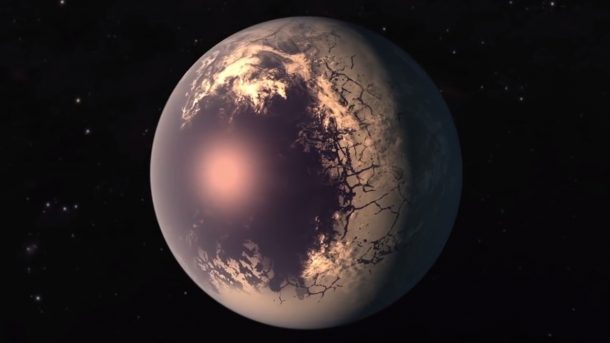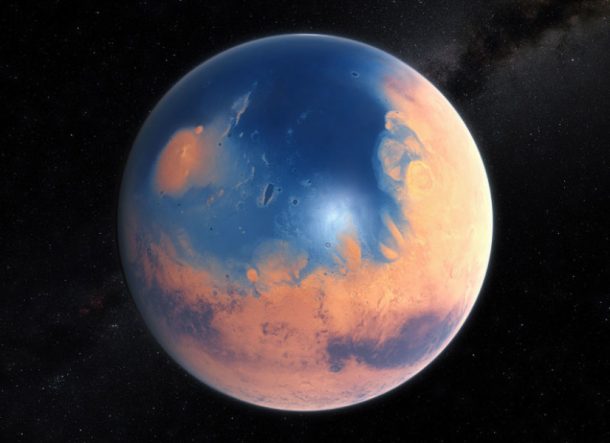Where there is water, there is life. But, is there anything as too much water for a planet to be habitable. That might be the case with the TRAPPIST planets. The latest study on the density of the seven planets in the nearby TRAPPIST 1 system has found that they may have even more water than Earth but the irony is it just might be too much water for life to prosper.
The planets were discovered a year ago and have been the target of studies ever since. Scientists are studying them in extreme detail to find everything about them and more importantly if life exists on these planets. The existing data shows the TRAPPIST planets to be light for their mass and volume and from what is observed, the worlds are not gassy to explain the light weight .

“The TRAPPIST-1 planets are too small in mass to hold onto enough gas to make up the density deficit,” says Cayman Unterborn, co-author of the study. “Even if they were able to hold onto the gas, the amount needed to make up the density deficit would make the planet much puffier than we see.”
The only other explanation is water. Lots and lots of water. Scientists use a physics calculator program known as ExoPlex where all the known data is plugged in and you get the unknown readings. The results show that water accounts for 15% of the mass of the innermost planets and over 50% for the outer planets. This is huge as compared to only 0.02% value of Earth and scientists ask not to get the hopes up.

“We typically think having liquid water on a planet as a way to start life, since life, as we know it on Earth, is composed mostly of water and requires it to live,” says Natalie Hinkel, co-author of the study. “However, a planet that is a water world, or one that doesn’t have any surface above the water, does not have the important geochemical or elemental cycles that are absolutely necessary for life.”
However, these studies are a result of incomplete datasets and could be wrong. Another study says that these planets only make up 5% water by mass. We still know very little about the TRAPPIST planets and it is still too soon to say anything conclusive about the planets.


